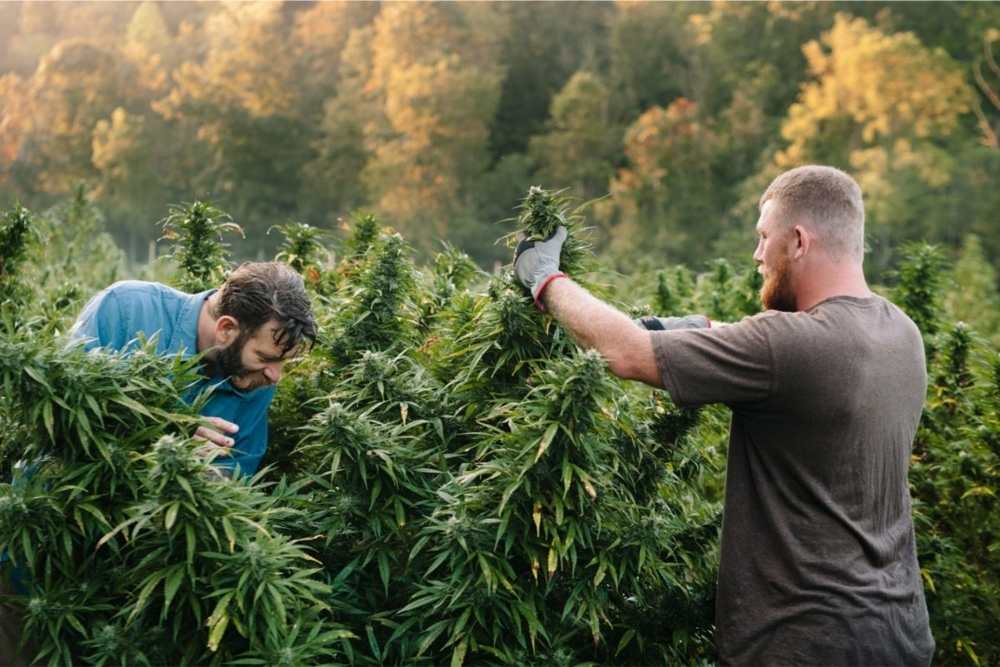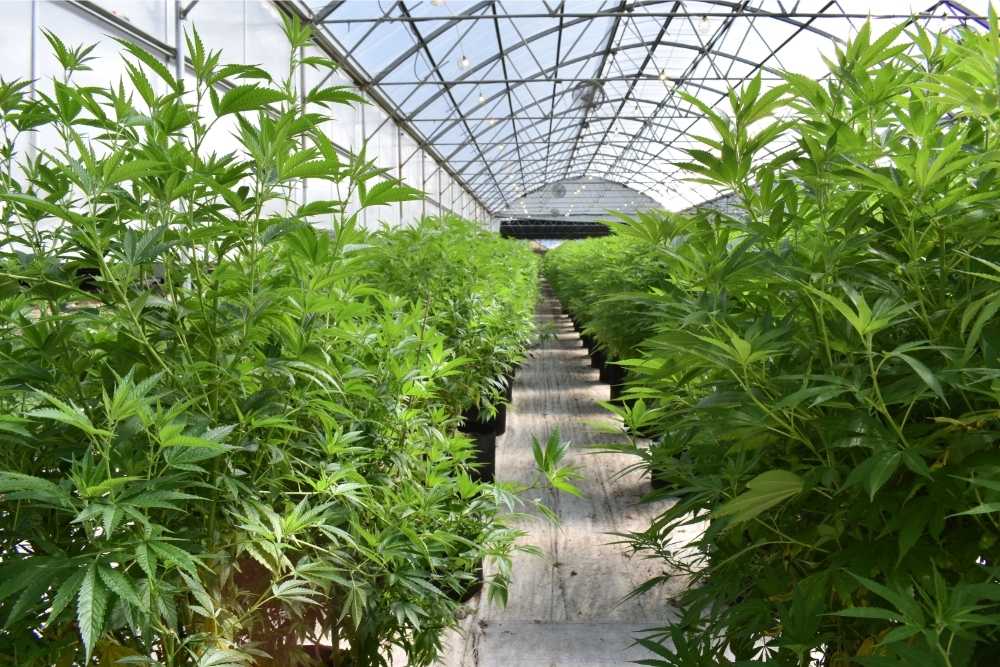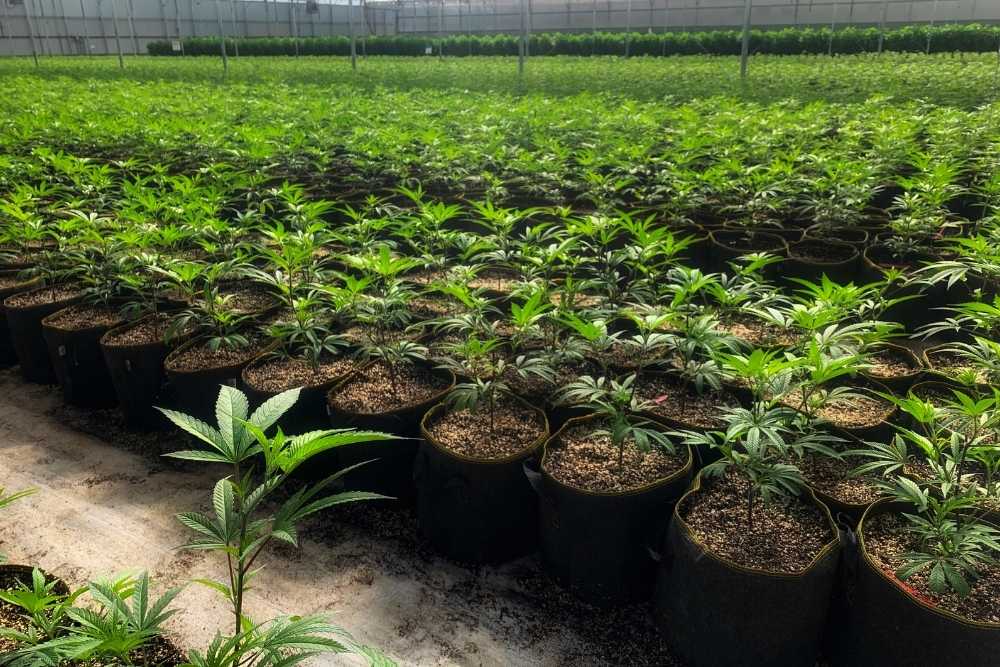Sustainable Cannabis: Growing a Greener Future
The cannabis industry has always been associated with the counterculture, which has prided itself on environmentally sustainable practices. But as the American cannabis industry grows, so does consumer demand and the bottom line for cannabis business owners. And with states legalizing cannabis and thereby increasing demand, a moral and ethical dilemma arises: is growing sustainable cannabis possible?
Many fear that the industry is on the verge of becoming environmentally unsustainable. But are these fears by environmentally conscious advocates and consumers misplaced? To answer that question, we need to examine cannabis cultivation and its environmental impact. More importantly, growers need to know what to do to make the cannabis industry greener. Keep reading to find out how to grow a greener future with sustainable cannabis.
What Is Sustainable Cannabis?
Sustainable cannabis is when growers cultivate cannabis with the intention of reducing the environmental impact of this resource-heavy crop. Researchers at Colorado State University determined that local cannabis production generates 2.6 megatons of carbon emissions. That’s more than the state’s coal mining industry.
Although cannabis requires a lot of natural resources, growers can take measures to limit their environmental footprint. Fortunately, the cannabis industry is still in its infancy. To stay ahead of the curve, growers are already instituting the best management practices available to help grow sustainable cannabis. Over time, these measures will cut down on waste for all methods of cannabis cultivation.
The Pros and Cons of the Three Methods of Cannabis Cultivation
It’s no secret that agriculture is a very resource-heavy business. Like all farmers, cannabis growers must use these resources within reason to produce healthy, bountiful crops for consumers to enjoy.
When it comes to cultivating cannabis, farmers can choose either:
- Indoor cultivation
- Outdoor cultivation
- Greenhouse cultivation
Let’s take a closer look at these various cultivation methods and the resources that go into them.
Indoor Cultivation
When cultivating cannabis outdoors, growers are at the whim of Mother Nature’s unpredictability. Oftentimes, this leads to an underperforming crop. This is why many growers prefer cultivating their cannabis indoors.
Cultivating cannabis indoors allows growers to control:
- Light schedules
- Water requirements
- Temperature and humidity settings
- Fertilization needs
- And other growing conditions to their specifications.
Through this tight control, indoor growers can manipulate their crop’s growth and flowering. This leads to multiple harvests a year with high-quality flower. Also, indoor growing is very discreet. It allows farmers to tend their crops without nosey neighbors or outside distractions.
Although indoor growing has many benefits, it is very resource-heavy. Because indoor growing requires plenty of light, water, and circulation, among other high-energy expenditures, farms will have to pay high utility bills to sustain their crops. The high overhead costs are a no-go for many growers. They might look for more cost-effective options like growing outdoors.
Hydroponics and Soil
Cannabis farmers can choose one of two ways to grow their crops indoors. The first method involves hydroponics. This method does not use dirt or soil. Instead, it relies on nutrient-rich water to deliver the nourishment cannabis plants need.
The typical hydroponic setup suspends the cannabis plants above a growing medium like rockwool or coco coir. A timed delivery system floods the roots of the suspended plants with nourishment. Growers prefer the convenience of hydroponics because it helps free up their time by automating feeding.
The other indoor cultivation method cannabis farmers use is to grow their crop in soil. Although this method is more time-consuming, it is more traditional and simpler. However, the yields are determined by how nutrient-rich the soil is and how often farmers maintain their watering schedule.
Outdoor Cultivation
From small gardens to large fields, the sky is the limit when growing cannabis outdoors. There are no light bills to pay or special ventilation systems to put in place. Farmers might even save on water with the occasional rainfall.
Some growers prefer outdoor cultivation because it uses free natural resources. Growing cannabis in a natural environment will also allow the plants to express qualities not present when grown indoors.
But that doesn’t mean it’s easy to grow cannabis outdoors. Growers will need to have:
- Ample outdoor space
- Appropriate soil or potting mix conditions
- Predictable weather and light schedules
- Adequate irrigation
- Pest response
- And a host of other variables to ensure successful crop growth
These factors will change depending on the size of the crop and the region where it’s grown. Tending to cannabis fields is also very time-consuming and very hard work. Ensuring each bud is of good quality, harvesting it by hand, and pruning it to perfection requires a lot of manpower.
Because outdoor growing conditions can be unpredictable, crop yields may be insufficient. Though this is nothing new for experienced outdoor growers who value quality over quantity. Growers will selectively prune plants that are of higher quality than others. Unfortunately, this can also produce a severe waste problem if not properly taken care of.
Greenhouse Cultivation
Greenhouses are nothing new to horticulture and cannabis cultivation. These large canopies provide cannabis growers with the best indoor and outdoor conditions. By combining the natural resources and large spaces of outdoor growing with the controlled environment of indoor growing facilities, greenhouses allow cannabis farmers to achieve the cannabis crop yields they desire.
A proper greenhouse will need a flat outdoor space, which can be costly to growers. Compared to the high costs of maintaining indoor facilities, the hybrid growing conditions of greenhouses can help save farmers money long-term. This is because greenhouses use a combination of natural and supplemental artificial light. This helps reduce energy costs greatly. The enclosed space also provides farmers with an easier way to control pests.
Sustainable Practices for Growing Cannabis
Although indoor growing has many benefits, it still is very resource-heavy. And because indoor growing facilities require plenty of artificial light, water, ventilation, and other high-energy expenditures, farms will have to pay high utility bills to sustain their crops. This heavy use of electricity and water will also come at a cost to the environment.
Cultivating cannabis outdoors has an environmental impact as well. Cannabis plants, in general, are very water-intensive. These needs will only increase with drought becoming more common. The climate change crisis also has a significant impact on crop survival. And the subsequent demise of outdoor crops will create excess waste that will need to be remediated.
So how exactly can the cannabis industry promote environmentally sustainable business practices? Fortunately, there are plenty of ways growers can make cultivating cannabis greener.
Let’s examine the four main components of sustainable cannabis farming: water usage, light needs, climate control, and waste reduction. Here are some ways growers can cultivate sustainable cannabis.
Water Usage
Water is the most important resource for cannabis plants. It’s also the biggest hurdle to improving environmental sustainability. A 2015 study of outdoor and greenhouse cannabis plants determined that it takes 22 liters (approximately 6 gallons) of water a day to sustain just one cannabis plant.
Yet a 2019 study found that controlled drought stress in cannabis plants was beneficial and produced more cannabinoids. This doesn’t mean that growers should stress their plants by limiting water needs. But it does suggest that even in the most water-restricted conditions, cannabis plants can survive. So using a little less water than normal might be okay.
But not all cannabis plants are the same. The amount of water cannabis plants consume can change. Factors that can impact water consumption include the:
- Type of cannabis strain being cultivated
- Size of a plant
- Health of a plant
- Ambient temperature
- Relative humidity
- Wind speed
Making Outdoor Cannabis Plants More Water-Efficient
For outdoor cannabis farms, such as those located in California’s central valley, the conditions that impact water use are out of their hands. But there are ways cannabis farmers can make the water needs of their outdoor plants more efficient.
Here are some ways to grow sustainable cannabis with water-wise efforts:
- Water plants early. Evaporation occurs between 11 am and 4 pm when temperatures are at their hottest. To reduce evaporation, water plants in the morning (8 am) or evening (8 pm).
- Use insulated white pots. If growing cannabis in pots, avoid black plastic pots since they absorb more sunlight and have poor insulation. White pots with insulated materials like fabric or polystyrene will reduce heat absorption and keep plants cool. Insulated white pots can reduce water consumption by up to 20%.
- Insulate the floors. This will help reduce heat transfer to pots during the day. In turn, this will reduce dehydration in potted plants. Like insulated white pots, insulated floors can reduce water consumption by up to 20%.
- Control the amount of water with drip irrigation. Drenching crops in water will always result in runoff and waste. Use drip irrigation to feed cannabis plants a steady, controlled, and specific amount of water.
- Use shading. Providing crops with shade is essential. This is especially true in areas of intense sunlight and heat. Using sun shades may help to reduce evaporation by up to 80% using proper sun shades.
- Invest in a rainwater collection system. This water reclamation system is very beneficial for regions that receive predictable rainfall.
Making Indoor Cannabis Plants More Water-Efficient
The ability to control the growing environment indoors is key to water conservation. Indoor cultivation already benefits crops by not dealing with intense outdoor heat and evaporation. This already saves a lot of water that would otherwise go to waste outdoors.
Farmers can fine-tune their indoor growing conditions to make water use more efficient. Some of these sustainability practices include:
- Checking water quality using a high-quality pH meter. Test the parts-per-million (PPM) to determine the nutrient levels of water. Optimum PPM and pH levels will help prevent nutrient lockout and ensure no water goes to waste.
- Monitoring and reclaiming water. Indoor growing makes it easy to track water use and reclaim excess water. If using too much water, fine-tune the amount to reduce runoff.
- Reuse the runoff water. Ensure the nutrient levels are right before feeding this water back to plants. Farmers can also collect water in drainage trays to have it reabsorbed by plants.
- Invest in a drip irrigation system. A drip irrigation system will provide plants with an exact way to meet their water needs. This precise feeding technique also saves water and reduces runoff.
- Collect and reuse rainwater. Large rainwater collection tanks are great investments. Rainwater is purer than municipal water supplies, which typically contain additives such as fluoride and chlorine.
- Use a proper growing medium. Absorbing and retaining water to promote proper cannabis plant growth is essential. Ensure the soil mixture includes coco coir, compost, peat moss, perlite, and vermiculite to help retain water.
Lighting
In addition to water, cannabis plants love light. Proper light exposure can be the difference between big, beautiful cannabis plants with potent blooms or small, stunted plants with poor-quality flower. When growing cannabis outdoors, growers don’t have to worry about light needs. Seasonal changes in light patterns determine when and how often the plants can bloom.
However, indoor facilities allow growers the opportunity to simulate light cycles. This can speed up plant growth and force plants to produce many harvests a year. But by maximizing blooms, growers run into the problem of excessive energy use.
Fortunately, there are ways to make lighting more sustainable. Growers can:
- Use LED lights. Indoor cannabis facilities typically use high-pressure sodium lights. Although very bright, these intense lights use a lot of energy. On the other hand, LED lights produce similar intensity, last longer, and consume less energy.
- Choose fast-flowering cannabis strains. Unlike photoperiod plants, which take up to 5 months to harvest, autoflower plants bloom much faster, typically around 10 weeks. Autoflower cannabis plants don’t require changes to their light cycle, either. This means growers will use less total light.
- Greenhouses offer a, well, greener option. As previously mentioned, greenhouses are a hybrid of outdoor and indoor growing facilities. With a proper greenhouse setup, growers can take advantage of sunlight during the day. This will significantly cut lighting costs and help reduce their environmental impact.
Climate Control
Outdoor growers can’t control the weather. This is why it’s important to cultivate crops in regions with predictable climates to ensure proper plant growth. But even with that, crops will be at the mercy of environmental changes due to climate change. That’s where indoor growers have the advantage at growing sustainable cannabis.
Growing cannabis indoors and in greenhouses allows farmers to fine-tune their environment. This will ensure their crops can develop optimally and produce high-quality yields. But just like water and lights, cannabis plants need their fair share of warm temperatures and humidity.
This requires an exhaust system to draw out hot air and fans to maintain proper circulation. These systems will have to run non-stop for 24 hours a day. Not only will this increase costs but also carbon and greenhouse gas emissions.
But there are ways growers can optimize energy efficiency and reduce cannabis’ environmental impact. These include:
- Investing in renewable energy. Recent years have seen companies harness the power of the sun to solve their energy needs. Solar panels are a worthwhile investment that can make HVAC systems more efficient. This will also save growers a lot of money on their monthly power bills.
- Install an energy-efficient HVAC system. Modern HVAC systems make energy use more efficient and less costly, both financially and environmentally. Specialized HVAC systems also have smart monitoring capabilities to help growers track and automate optimal growing conditions. Older HVAC systems can’t support automation, which leads to increased energy consumption.
- Location, location, location! Set up the grow room in a building with proper insulation to prevent wasting extra energy. If the growing facility is older, consider retrofitting it with modern energy-saving features. Also, work with local power companies to draw energy from off-peak hours.
Waste Management Practices
However big or small a cannabis crop, it will produce waste. Growers are responsible for this waste until it’s properly disposed of. But growers can create workable standards to help improve sustainability. Instead of their waste going to a landfill, greener options exist to reduce the environmental impact of cannabis cultivation.
Some waste reduction methods to help drive cannabis sustainability include:
- From cannabis to compost. Leftover cannabis plant material can be recycled and converted into compost. All growers have to do is add the excess plant material to their compost bin. Within months, the organic waste will decay into usable compost to feed newer crops.
- Join a cannabis waste management program. California cannabis farms can join GAIACA, a cannabis waste management and disposal company. Named after Gaia, the Greek goddess of Earth, the company is leading the way for cannabis companies looking to responsibly dispose of their waste. These full-service waste management practices guide growers toward more sustainable cannabis solutions and a greener future.
- Reuse old soil. Cannabis plants require very healthy soil to begin with. The depleted soil left behind after harvesting is still of good quality and can be reused. All growers need to do is amend it to ensure it contains the nutrients and minerals needed for good growth.
- Recycle runoff. Cannabis plants need a lot of water. As a result, runoff is common. Growers can reuse runoff to water other plants. But before they do, they need to test for chemicals, nutrients, pH, and salt to ensure the runoff is safe.
What Steps Is the Cannabis Industry Taking About Sustainability?
According to the National Cannabis Industry Association (NCIA), sustainability is a virtue their members value. With a growing network of more than 1,000 cannabis industry professionals, businesses, and organizations, NCIA is committed to providing green solutions for the industry.
But the cannabis industry is still young. So NCIA is making an effort to have cultivators be more forward-thinking about sustainability. In 2020, NCIA released an in-depth report giving recommendations on improving sustainability and making the cannabis space a leader in green initiatives.
Currently, the onus on sustainability is up to cannabis business owners. And since most cannabis is grown indoors, going green would benefit them the most. As we highlighted, sustainable cannabis practices will make for more efficient cultivation. This means cannabis companies will save on production costs while being environmentally sustainable. It’s a win-win for cannabis businesses and the environment.
What Is the Future of Sustainable Cannabis?
The cannabis industry has a very green future in more ways than one. The federal government gave hemp the green light in 2018 by legalizing it nationwide. Legal marijuana sales are expected to reach a record $33 billion in 2022. Money talks, which is why policy experts expect more states to legalize marijuana in the coming years.
The industry also knows that the prime consumers of cannabis are also very environmentally conscious. As demand increases, so will ethical and sustainable cannabis cultivation to satisfy consumers. And with non-cannabis industries making efforts to improve sustainability, the future is green. The cannabis industry is no exception to this.
Where Does Cheef Botanicals Stand on Sustainable Cannabis?
At Cheef Botanicals, we care strongly about the environment and sustainable cannabis production. That’s why we only use renewable, plant-based resources to make our cannabis products. You won’t find any animal derivatives anywhere. In fact, we are 100% cruelty-free! All of the ingredients in our products are ethically sourced and sustainably farmed. Our hemp-based goods contain no additives, harsh chemicals, or preservatives.
We offer consumers Certificates of Analysis (COA) to confirm our product safety. COAs are third-party lab reports that provide a detailed analysis of our products. They confirm the safety and potency of our goods to ensure consumers receive the purest cannabis products possible.
You contribute to a greener, more sustainable future when you shop with us. Our commitment to sustainable cannabis and the holistic power of hemp and its life-changing benefits will help bring balance to the world and allow you to live the life you always wanted.
Final Thoughts — Sustainable Cannabis: Growing a Greener Future
With hemp legal and with the federal marijuana legalization around the corner, cannabis companies are working hard to meet consumer demand. But cannabis cultivation poses a major problem: sustainability. Cannabis requires a lot of resources and adds to our worsening environmental crisis. To solve this, growers are leading the way with better sustainable cannabis practices.
These sustainable practices do more than help our environment. They also end up saving cannabis growers money without sacrificing quality. At the end of the day, going green is not just essential for sustainable cannabis but a sustainable world.
TLDR: Growing cannabis requires a lot of resources and adds to the climate change crisis. But growers can follow several sustainable practices to grow efficient, environmentally friendly cannabis. Many cannabis farms already use these practices and more will join in the years to come. The goal is to make cannabis one of the most environmentally-conscious industries around.






